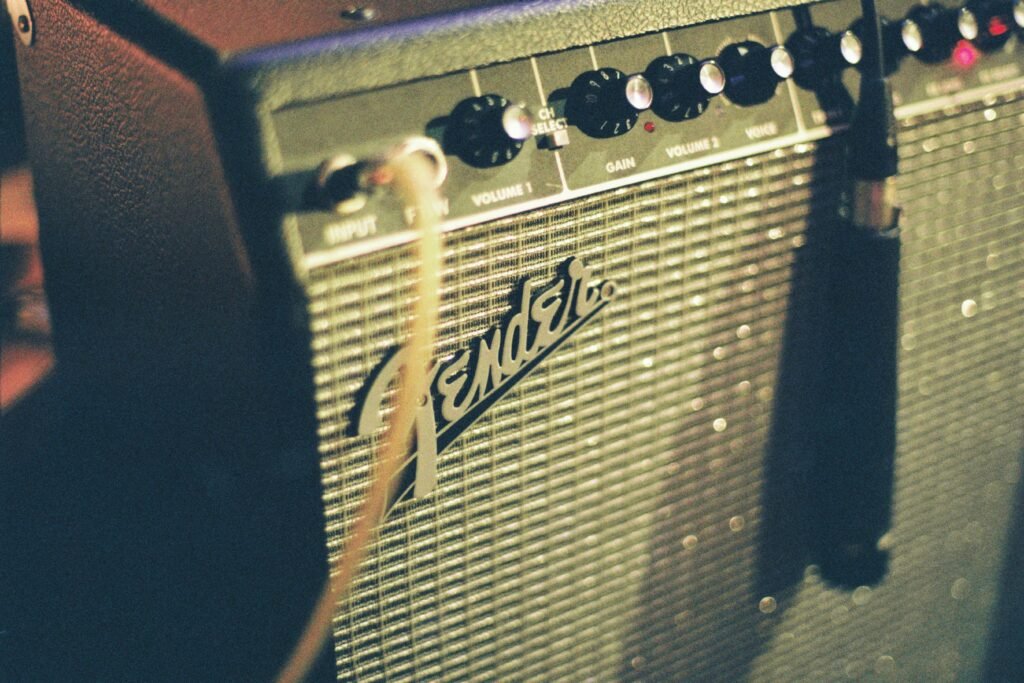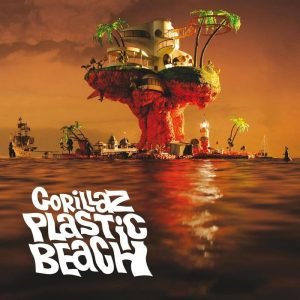When Plastic Beach dropped in 2010, Gorillaz were already known for blurring boundaries—between music genres, between animation and reality, and between commercial pop and critical commentary. This third studio album didn’t break from that mold but instead expanded it. Following the dark theatricality of Demon Days and the cartoonish swagger of their debut, Plastic Beach presented a more mature, cohesive world. It stood as both a natural progression and a bold shift.
This album marked a move toward concept-driven storytelling. Rather than just being another set of eclectic songs from a virtual band, Plastic Beach envisioned an entire fictional environment—a floating island made from the waste of modern life. That idea informed not just the visuals and lore, but the music itself. The result was a polished, futuristic sound that still carried Gorillaz’s signature mix of hip-hop, electronica, funk, and pop, but with a stronger environmental and cultural message woven throughout.
Sonic Exploration

From the first note to the last fade-out, Plastic Beach showcases a carefully sculpted soundscape that balances high production quality with an intentionally synthetic sheen. The album’s production is slick—crisp, detailed, and clean—but it never feels sterile. Instead, this polish is part of its conceptual design. Everything sounds just a bit too perfect, too pristine, like music piped through a futuristic shopping mall or broadcast from a neon-lit space station. That surface-level sheen mirrors the album’s deeper themes about artificiality and consumerism.
The production, largely handled by Damon Albarn, shows a meticulous attention to texture and tone. Beats are layered but never overcrowded. Each track feels spacious, even when packed with complex instrumentation. Synths glide and pulse throughout the record, but they’re often offset by organic touches: a fluttering string section, a mournful horn, or a raw vocal line that cuts through the gloss. This contrast adds emotional depth to an album that might otherwise feel too polished.
Vocally, the arrangements are one of the album’s strongest suits. Rather than leaning on a single voice, Plastic Beach plays like a global broadcast, with each guest bringing a distinct flavor. From Snoop Dogg’s laid-back swagger on the opener to Bobby Womack’s impassioned wails on “Stylo,” the vocal choices are not just stylistic but thematic—each voice a character on this surreal, post-modern island. Albarn often plays the observer or narrator, letting the guests drive the emotional weight while he stitches it all together with understated hooks and refrains.
Genre Elements
Musically, the album is a melting pot. Hip-hop, electro-pop, funk, orchestral pop, dub, synth-pop, and even touches of Middle Eastern and East Asian music come into play. But what makes it more than just a collage is how seamlessly these genres are woven together. “Empire Ants” begins as a quiet piano ballad before morphing into a synth-drenched dreamscape. “White Flag” fuses grime rap with traditional Middle Eastern instrumentation. These transitions are rarely jarring; instead, they feel like shifts in scenery on a journey across a vast, strange ocean.
Lyrical Analysis

Beneath the glossy surface of Plastic Beach lies a lyrical core that is both thoughtful and emotionally resonant. The album explores a world shaped by excess, decay, and disconnection. Its central themes—environmental degradation, consumerism, artificial beauty, and spiritual emptiness—are not always addressed head-on, but they linger in the background of almost every track, like a synthetic haze.
One of the most striking things about the lyrics on Plastic Beach is their ability to suggest a broader narrative without becoming didactic. Songs like “Welcome to the World of the Plastic Beach” introduce this man-made island as a kind of seductive dystopia, where luxury and waste coexist. It’s not a place of outright doom, but of quiet erosion—of nature, of identity, and of meaning.
Recurring motifs emerge as the album unfolds. The ocean, for example, is more than just a setting—it’s a symbol of both escape and loss. Tracks like “On Melancholy Hill” and “To Binge” use aquatic imagery to evoke longing and emotional drift. There’s also a sense of isolation that runs throughout, even when the songs are rhythmically upbeat. Many of the lyrics hint at being disconnected—from others, from nature, from oneself.
Lyrical Depth
Lyrically, the album strikes a balance between simplicity and depth. Albarn often writes in plain, unadorned language, but the meanings linger. Lines like “Up on Melancholy Hill, there’s a plastic tree / Are you here with me?” sound almost childlike on first listen, yet they carry a haunting emotional weight. They suggest a longing for something real in a world built on illusion. Elsewhere, songs like “Broken” and “Cloud of Unknowing” adopt a more somber tone, expressing personal vulnerability and regret with quiet clarity.
The presence of multiple guest artists also adds variety to the lyrical landscape. Each collaborator brings their own voice and perspective, which helps shape the album’s layered world. Mos Def’s rapid-fire verses in “Sweepstakes” take aim at consumer culture, while De La Soul’s cheeky performance on “Superfast Jellyfish” mocks the absurdity of processed living. Even in moments of satire, there’s an underlying sense that something has been lost—that the world has become both louder and lonelier.
Emotionally, the lyrics deepen the album’s impact. They don’t shout for attention, but instead unfold gradually, leaving room for interpretation. The result is a record that feels introspective without being self-indulgent, and critical without turning cold. It’s not just the music that invites repeated listens—it’s the subtle, poetic unease buried in the words.
Cohesion and Flow

One of the most impressive aspects of Plastic Beach is how it manages to feel both sprawling and tightly woven. Despite the sheer number of collaborators and genre shifts, the album maintains a clear sense of direction. The track progression is deliberate, guiding the listener across a landscape that feels like it’s constantly shifting, yet always part of the same surreal world.
From the opening orchestral prelude, which segues into Snoop Dogg’s laid-back welcome on “Welcome to the World of the Plastic Beach,” the album sets its tone with cinematic confidence. This introduction serves as a gateway, not just into a collection of songs, but into a fully realized universe. From there, the album flows like a journey—sometimes smooth, sometimes jarring—but always purposeful. Tracks like “Rhinestone Eyes” and “Stylo” push forward with momentum, while “Empire Ants” and “On Melancholy Hill” provide emotional valleys that feel reflective and still.
There is a definite narrative thread, though it remains open-ended. Rather than a strict storyline, the album presents a series of scenes or vignettes, each offering a different perspective on the artificial island it imagines. The emotional progression moves from curiosity and allure into melancholy and fragmentation. The final stretch, particularly with tracks like “Broken” and “Cloud of Unknowing,” carries a sense of resignation, even quiet despair. The closing title track then fades like a final glance at the island sinking beneath the waves, unresolved but complete in its own way.
Thematic Consistency
In terms of thematic consistency, Plastic Beach succeeds remarkably well. Despite the wide array of styles—from electro-funk to orchestral pop to grime—the album never feels chaotic. Each song, no matter how different in sound, reinforces the same core ideas: a world of beauty built on waste, of connection frayed by technology, of nature obscured by consumerism. Even the more playful or upbeat tracks serve the larger picture, often using irony or exaggeration to underline the album’s critique of modern life.
There are moments where the transitions between tracks can feel slightly abrupt, especially when moving from one guest artist to another with drastically different styles. However, these shifts rarely break the album’s flow. If anything, they mirror the disjointed, patchwork nature of the plastic island itself—a world pieced together from mismatched parts, yet functioning as a strange, haunting whole.
Standout Tracks and Moments
While Plastic Beach is best experienced as a complete journey, several tracks stand out for their individual brilliance—whether through lyrical depth, sonic innovation, or emotional weight.
On Melancholy Hill
“On Melancholy Hill” is arguably the emotional core of the album. With its warm synths and wistful melody, it captures a gentle sadness that contrasts the more chaotic energy found elsewhere. Damon Albarn’s understated vocals give the song a dreamlike quality, and the line “If you can’t get what you want, then you come with me” feels like both an invitation and a surrender. It’s a rare moment of tenderness in an otherwise synthetic landscape, making it one of the album’s most memorable offerings.
Empire Ants
“Empire Ants” is another highlight, notable for its dynamic shift. It begins as a minimal, melancholic ballad with Albarn’s vocals floating over sparse piano chords. Then, about halfway through, the track erupts into shimmering synths and pulsing beats, carried by Yukimi Nagano of Little Dragon. This sudden transformation not only grabs attention but reflects the dual nature of the album—tranquil on the surface, restless underneath.
Stylo
“Stylo,” featuring Bobby Womack and Mos Def, delivers a powerful blend of funk and futurism. Womack’s raw, impassioned vocals bring a human touch to an otherwise mechanical groove, and his performance—recorded in a single take—is a standout moment of pure emotional force. The song’s dark energy and relentless rhythm make it one of the album’s most urgent tracks, embodying the tension between man and machine.
Superfast Jellyfish
“Superfast Jellyfish” leans more into satire, but it does so with sharp precision. De La Soul’s playful verses, combined with Gruff Rhys’s catchy chorus, create a track that critiques fast food culture with absurd cheerfulness. The jingle-like delivery is deliberately over-the-top, and that irony is what makes it work so well. It’s funny, unsettling, and smart—all at once.
Cloud of Unknowing
“Cloud of Unknowing,” featuring Bobby Womack again, stands out as one of the most soulful and stripped-back moments on the record. The song’s sparse arrangement lets Womack’s voice carry the weight of the track, and his performance—gravelly, vulnerable, and searching—brings the album to an introspective close. It’s a powerful reminder that beneath the gloss, Plastic Beach is driven by real emotion.
Artistic Contribution and Innovation

Plastic Beach holds a distinctive place in the landscape of early 2010s music. Arriving at a time when genre boundaries were already starting to erode, Gorillaz pushed that dissolution further—delivering a project that was less concerned with fitting into a category and more focused on building an immersive, multi-dimensional world. It’s not just an album; it’s a universe with its own geography, characters, and rules. In that sense, Plastic Beach didn’t just participate in the shifting tides of pop and alternative music—it helped shape them.
Within the broader realm of electronic pop, hip-hop fusion, and experimental music, Plastic Beach feels like a bridge. It links the early internet-era optimism of genre mashups with a more modern, cohesive approach to conceptual albums. While other artists were dabbling in cross-genre collaboration, Gorillaz made it feel seamless, using collaboration as a storytelling tool rather than a gimmick. The album’s roster—spanning rap legends, soul icons, indie darlings, and world musicians—was unusually ambitious for a mainstream release, and the fact that it works as a cohesive whole is part of what makes it so innovative.
Innovation
In terms of production, Plastic Beach stands out for its clean, synthetic polish, which was not as common at the time in concept-driven albums. It doesn’t rely on analog warmth or lo-fi grit to convey emotion. Instead, it embraces artificiality in its textures—processed vocals, digital strings, programmed beats—and uses that to underline its themes of plasticity, decay, and modern detachment. The decision to lean into this sonic clarity while still conveying emotional weight was a bold move, and it helped set the tone for future artists exploring similar territory.
Thematically, the album was ahead of its time. Long before mainstream pop began regularly addressing climate change, digital overload, and consumer culture with any seriousness, Plastic Beach was already building an entire narrative around those concerns. It didn’t preach, but it made its critique clear through allegory and aesthetic. The fictional plastic island isn’t just a clever metaphor—it’s a mirror, reflecting the state of the real world with vivid detail and subtle unease.
What makes Plastic Beach particularly unique is how it brought high-concept art into a digestible, chart-friendly format. The album had hits, but it also had depth. It invited casual listeners and deep divers alike, offering easy access through melody and rhythm while rewarding closer attention with layered meaning. That balance is hard to strike, and Gorillaz achieved it without compromising their artistic vision.
Closing Thoughts

Plastic Beach is a rare example of an album that manages to be both conceptually ambitious and deeply listenable. Its strengths lie in its world-building, its rich production, and its seamless fusion of genres. From its lyrical subtlety to its diverse guest performances, it consistently rewards repeat listens. The themes of environmental decay, consumerism, and emotional disconnection are explored with nuance, avoiding heavy-handed messaging while still provoking thought.
Musically, the album’s polish and precision create a striking contrast with the rough realities it critiques. It sounds beautiful, even when it’s pointing to the ugly side of modern life. That contradiction is part of its brilliance. Tracks like “On Melancholy Hill,” “Empire Ants,” and “Stylo” remain high points not just within the album but in the Gorillaz discography overall. Meanwhile, the emotional range—from the satirical to the sincerely mournful—gives the project both breadth and depth.
That said, the album isn’t without its minor flaws. The very diversity that makes it exciting can also result in a few uneven transitions between tracks, and some collaborations may feel more like interesting detours than essential components of the narrative. But these are small trade-offs in an otherwise remarkably cohesive and forward-thinking work.
As a milestone in Gorillaz’s career, Plastic Beach represents both a creative peak and a bold turning point. It reaffirmed the project’s ability to stay relevant while taking risks, and it set a high bar for what a pop concept album could be in the digital age.
Official Rating: 9/10
This score reflects the album’s lasting impact, its inventive spirit, and its exceptional execution across sound, theme, and emotion. While not entirely flawless, Plastic Beach comes impressively close—and more importantly, it leaves a lasting impression, inviting listeners into a world that’s as thought-provoking as it is sonically rich.
